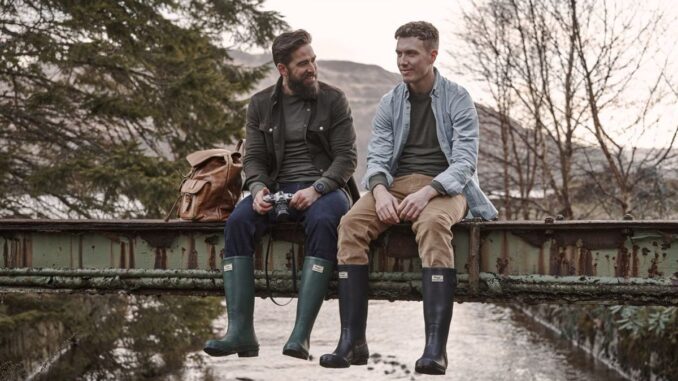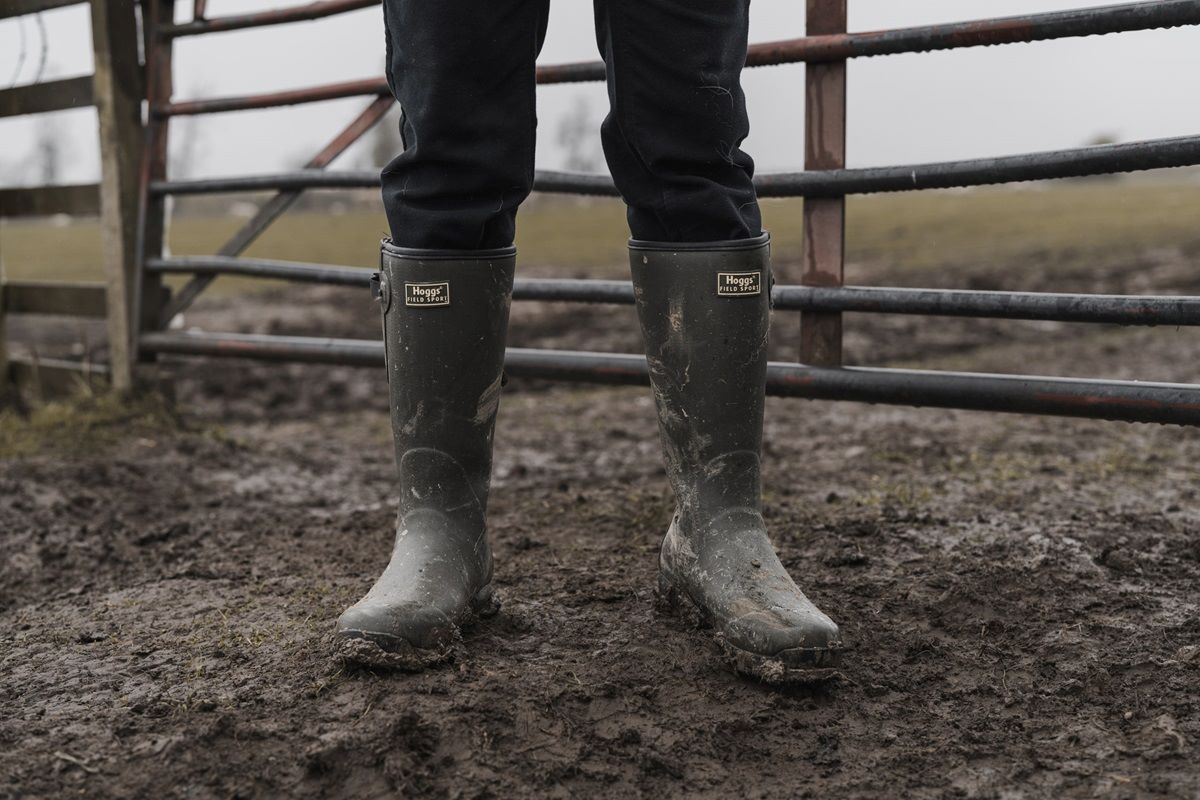
What would we the Brits ever do without unisex, sexless halogenated polymers? Where would we be without PVC? Or TPU? Thermoplastic polyurethane that is. Probably up to our necks or, at the very least, our shins in it.
Very possibly too standing on the edge of giant cowpie, summing up the nerve to jump it without ruining our best brogues and country casuals. Rather than fearlessly taking the plunge and walking straight through it.
It is far more satisfying to hear than the sound of wind rustling through pines, the dawn chorus and brooks babbling. Nothing compares with the sound of planting your foot right in the middle of a cowpat. And there is no finer sound in the natural world than the one you hear when you withdraw the said foot from the said pat. That “squelch” and that “flupp” remain with you always.
There is nothing you can’t do in a welly. Apart, of course, from tap dance, play professional sport and perform on stage for the Royal Ballet etc.
Wellies are chic. The good old gumboot is sina non qua of country wet weather gear. And it has a history to boot.
British landowners won’t be seen out of their wellies. Unless they are at a wedding, a Buckingham Palace Garden party or indoors.
The gumboot has been re-gentrified.
And its increasingly becoming an essential look in American slush, floods and general inclemency. Posh shoes are for parties. Wellingtons are for puddles. And cow pies.
A well-made Wellington boot is a must-have winterwear. They are now officially cool.
Popularized in the late eighteenth century by the most famous foot fetishist of them all, Arthur Wellesley, first Duke of Wellington. Soon his fellow aristos and the underclasses were following in his modified Hessian footsteps. His bespoke cobblers, Hoby of St. James’s Street, London, fabricated the traditional military boot in soft calfskin leather, removed the trim and cut it to fit more closely around the leg. The heels were low cut and stacked an inch. The half-calf was suitable for riding as well as informal evening wear. The Duke liked to show off his tassels.
The Wellington boot became less foppish during the First World War when The North British Rubber Company (now Hunter Boot Ltd) was commissioned by the War Office to design a boot for the trenches. Over a million were made. Steel toes were added. Green wellies appeared in 1955. Lady Diana Spencer was a fan. Nokia made rubber boots before it did mobile phones.

In June of last year, it was reported that the iconic 160-year-oldfootwear company, Hunter Boots UK had collapsed into administration owing creditors £112m. Hunter announced that it was in a “brief transition period”.
But there are still Sperry Top Siders, Lakeland talls, Skellerups, Joules and other iconic wellie brands. In 1852 Hiram Hutchinson bought the patent to manufacture boots using Charles Goodyear’s sulfur vulcanization process for natural rubber founding À l’Aigle (“At the Eagle”) waterproof boots to replace the wooden clogs worn by French agricultural works.
Dunlop goes back to 1888 when Scottish vet John Boyd Dunlop invented the pneumatic tyre and diversified into protective footwear as well as golf balls and tennis racquets. Today, you can be safely shod in its best-sellers such as the Field Pro and Blizzard.
Hoggs of Fife (est.1888) offers its Braemar Wellington Boots with slip-resistant rubber soles (£44.95), Aqua Tuff Safety Riggers (£44.95) and pull-on and kick-off, synthetic Lomond (£12.95) as well as their Field Sport Neoprene-lined Wellingtons (£109.00) and Field Sport 365 Cotton Lined Wellingtons (£89.95).
I have soft spot for Hoggs, as I discovered them when a student at St Andrews University. Frankly, I wouldn’t trudge in anything else.
Le Chameau is the only modern rubber boot still handmade by a single bootmaker. The range starts from £120 to £200. The company goes back to Cherbourg and 1927 when Claude Chamot designed boots to withstand “the rigours of the countryside and the sea”.
Wellies are now de rigeur in fish and food processing as well as oil and mining and other heavy industries. They are not just for prolonged digging in the garden, mucking out, short and long-distance dog walking, point-to-points, fording streams and walking through brambles unscathed. The appeal of the Wellie is no not all about the waterproofing, thorn-proofing, insulation and stain resistance. It is largely to do with the lovely sound they make.
That sound which is just as nice and comforting as hearing a cracking campfire, cicadas, bird song, rain on the window, the wind sloughing through wetland reed beds, Bubble wrap popping, crashing waves and cascading waterfalls. As well of course, as the satisfying sound of a cowpat being successfully negotiated. Of a large pile of dung survived.
No road trip or walk in the country can be undertaken without a pair of Wellingtons sitting up in the back, eager to get out into the great, dank and gooey outdoors.
Wellies are made for squidgy terrain. They are made for varying calf sizes as well as English cowpats and American cowflops.
They are the indispensable travel accessory.
Author Bio:
Kevin Pilley is a former professional cricketer and chief staff writer of PUNCH magazine. His humour, travel, food and drink work appear worldwide, and he has been published in over 800 titles.
Photographs courtesy of Hoggs of Fife



Be the first to comment